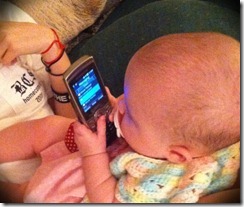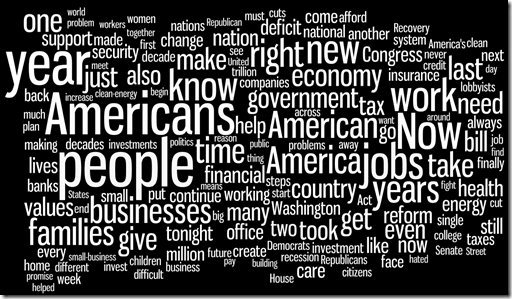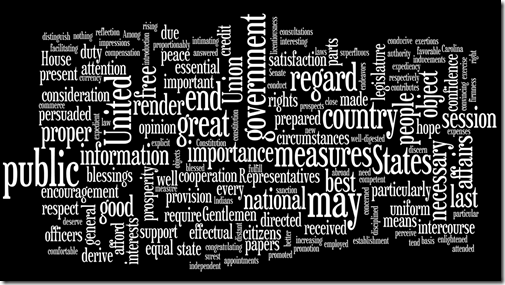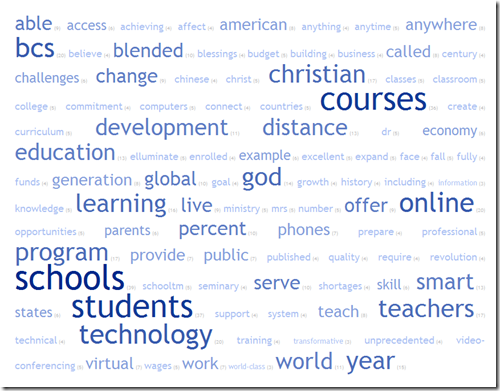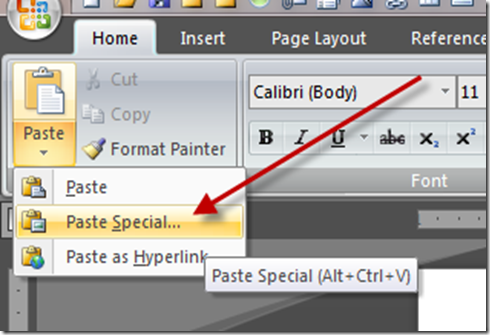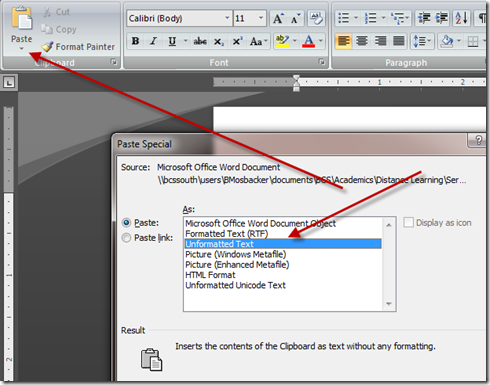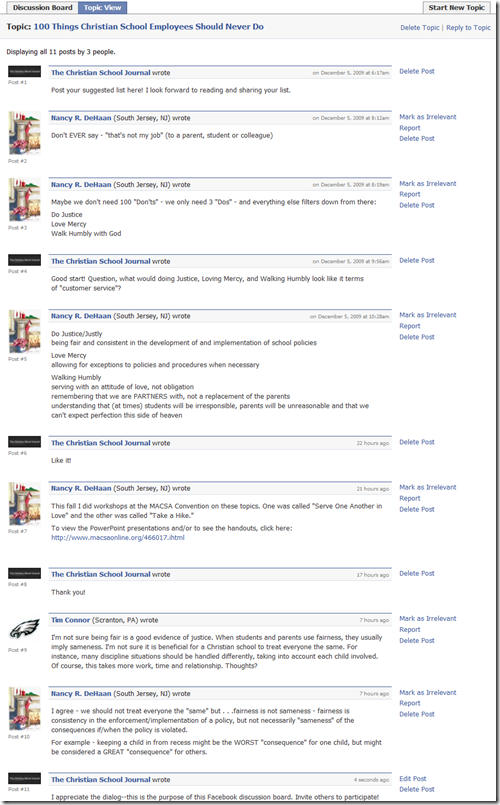Why Sweating the Small Stuff Makes a Big Difference
/ For years I have been taught not to “sweat the small stuff.” I warmly embraced this notion because it reinforced my natural inclination to focus on big strategic initiatives and to pay less attention to the small details, leaving those to others.
For years I have been taught not to “sweat the small stuff.” I warmly embraced this notion because it reinforced my natural inclination to focus on big strategic initiatives and to pay less attention to the small details, leaving those to others.
I have changed my mind. I have concluded that small stuff make a big difference. Small stuff deserve a great deal of our attention!
What Convinced Me
God’s Care for Us and Creation:
If anyone was going to focus on big strategic plans it would be God. As the creator and governor of the physical universe and the affairs of heaven and earth, God certainly is focused on large scale objectives.
Yet, notice the incredible attention to detail exhibited by his rule:
Are not two sparrows sold for a penny? And not one of them will fall to the ground apart from your Father. But even the hairs of your head are all numbered. Fear not, therefore; you are of more value than many sparrows. (Mt 10:29–31)
Consider the remarkable detail in God’s creation. Look at how  intricately God designed a flower. While God wrote our names in the Book of Life before he laid the foundations of the world and “made from one man every nation of mankind to live yon all the face of the earth, having determined allotted periods and the boundaries of their dwelling place,” (Ac 17:26), he also designed the intricate details of flowers.
intricately God designed a flower. While God wrote our names in the Book of Life before he laid the foundations of the world and “made from one man every nation of mankind to live yon all the face of the earth, having determined allotted periods and the boundaries of their dwelling place,” (Ac 17:26), he also designed the intricate details of flowers.
And why are you anxious about clothing? Consider the lilies of the‘ field, how they grow: they neither toil nor spin, yet I tell you, even Solomon in all his glory was not arrayed like one of these. (Matt. 6:28-29)
Ugly can be beautiful. The head and eyes of a horse-fly may  not be “beautiful” in the classical sense yet the incredible creativity, detail, and symmetry is a beautiful reflection of God’s attention to detail and a nearly incomprehensible marriage of function and form.
not be “beautiful” in the classical sense yet the incredible creativity, detail, and symmetry is a beautiful reflection of God’s attention to detail and a nearly incomprehensible marriage of function and form.
Few things are more ethereal and ephemeral than a snow flake-especially in the U.S. South! Yet, even with something so fragile and short-lived, the variety, symmetry and beauty of a snow flake is a testament to God “sweating the small stuff.”
Not only does God’s creation “work,” it is beautiful and awe inspiring—and to the attentive soul—soul ennobling. Who has not been in the mountains, on a prairie, a beach, or a lake--and not been enthralled and enriched by the beauty made possible by God’s attention to the smallest details of his creation?
Steve Jobs:
It may seem odd to include Steve Jobs in a list with God. I do so because as an image bearer of his creator Job’s attention to detail imaged that of his creator—whether he chose to acknowledge it or not. Jobs was fanatical about every detail of Apple’s products--even the unseen innards:
From his father Jobs had learned that a hallmark of passionate craftsmanship is making sure that even the aspects that will remain hidden are done beautifully. One of the most extreme—and telling—implementations of that philosophy came when he scrutinized the printed circuit board that would hold the chips and other components deep inside the Macintosh.
No consumer would ever see it, but Jobs began critiquing it on aesthetic grounds. “That part’s really pretty,” he said. “But look at the memory chips. That’s ugly. The lines are too close together.” One of the new engineers interrupted and asked why it mattered. “The only thing that’s important is how well it works. Nobody is going to see the PC board.”
Jobs reacted typically. “I want it to be as beautiful as possible, even if it’s inside the box. A great carpenter isn’t going to use lousy wood for the back of a cabinet, even though nobody’s going to see it.”
For Jobs, designing and manufacturing electronics was craftsmanship, not merely an economic activity. He was fanatical about design and detail, even in product packaging because he learned that people DO judge a book by its cover:
“You should never start a company with the goal of getting rich. Your goal should be making something you believe in and making a company that will last.” Markkula wrote his principles in a one-page paper titled “The Apple Marketing Philosophy” that stressed three points.
- The first was empathy, an intimate connection with the feelings of the customer: “We will truly understand their needs better than any other company.”
- The second was focus: “In order to do a good job of those things that we decide to do, we must eliminate all of the unimportant opportunities.”
- The third and equally important principle, awkwardly named, was impute. It emphasized that people form an opinion about a company or product based on the signals that it conveys. “People DO judge a book by its cover,” he wrote. “We may have the best product, the highest quality, the most useful software etc.; if we present them in a slipshod manner, they will be perceived as slipshod; if we present them in a creative, professional manner, we will impute the desired qualities.
Application to Our Leadership and Schools
Perception is important. How we “present” our product is important. We may have wonderful teachers and programs but unless we present them with excellence would-be and current parents may perceive our schools as second-rate. The good news is that “good packaging” doesn’t have to be expensive, it just needs to reflect attention to detail.
Like the cover on a book or your first impression of someone you meet, perceptions are formed almost immediately. The first impression that parents get is from a phone call to the school, the website, or a visit to the campus.
Facilities
It is easy to become “blind.” We are like the proverbial frog in the kettle, we have grown so accustomed to our surroundings that we no longer see what a visitor sees. Everything looks fine to us.
Take one hour and walk through your buildings with a notebook. Write down everything that is not perfect. Note every time you see chipped paint, scuff marks, dirty carpet, smudges on glass doors, paper/trash on the floor or in the parking lot, shrubs needing trimmed, bare patches in the grass, book bags lying around, handwritten student or school messages/signs/posters (I’m not reviewing to student projects-I’m referring to announcements, directions, etc.), messy offices and desks, stuff out of place, pictures ajar in the reception area, etc.... You may be surprised just how disheveled things can become.
Phone Calls
How are your phones answered? Do people reach an electronic message system with a labyrinth of options or a warm professional receptionist? I have been lobbied for years to install an automated answering system. It is “more efficient” is the reason given. I have refused because such a system, though more “efficient” does not reflect the warm nurturing culture of our school. Besides, people hate electronic answering systems, don’t you?
I call a lot of schools. I am often dismayed by the poor phone skills of those who answer the phones. Too often I am greeted with a sweet but unprofessional receptionist (poor grammar or too casual), or a very professional but “cold” individual. In contrast, whenever I have called Apple headquarters or Apple support, I am greeted by a cheery, pleasant professional who always proves helpful. I am always left with a good impression.
Try this. Call your school with new ears. Use a phone that cannot be identified as you. Was the impression you received that of a well educated, professional, happy individual or one who was harried and poorly spoken? If you were calling the school for the first time, what impression did you get within the first 30 seconds?
Website
Was your website custom designed by a professional or was it created using a template and/or by a volunteer? If the latter, it will look like it and the first impressions, while perhaps not “bad,” will not be superb. Following my own advice, we are completely redesigning our website (not yet up).
When you review your website, look for the following:
• Simple design, uncluttered • Easy to navigate • Warm and friendly • Professional (drop the apples, crayons, etc.)
Remember, people will not spend a great deal of time reading material on your website. The website should be designed to give a positive impression of the school, highlight important information, and provide easy navigation on where to obtain more information.
I recommend that you not put the photographs of your staff on the website’s staff directory unless they are unusually and universally photogenic. A few well chosen photographs of staff and students on your site is very effective, but a directory with staff photos is not. Most of us are not particularly photogenic so there is little to be gained by plastering our faces on the school’s website.
Staff Appearance
The way you and your staff dress creates a powerful impression. Although dress should be appropriate for the job, overly casual attire or poorly worn clothing does not create an impression of quality. Walk around your school; discretely notice how your teachers and staff are dressed. Are men’s ties tied properly? Are the collars on men’s shirts crisp or wrinkled? Are shoes polished? Do some of your staff look “frumpy?” Designer cloths are not necessary, but being professionally dressed in contemporary styles is.
Your Presentations
Your presentations communicate a lot about you and the school! Every presentation you make is enhancing or diminishing the “customer’s” (students, current and prospective parents, staff) perception of the school.
Are your presentations professional and warm? Just as being professionally “cold” is to be avoided, so too is overly folksy. Here are some “small things” to sweat about.
• Start and end on time. It is unprofessional and inconsiderate of those who arrived on time to start any meeting late. Do so also “trains” people to come late, after all, the “meeting will not really start until 10 after...” • Make sure the venue, including the stage area, is neat and clean. • Less is more--too much information given for too long is counter-productive. It is best to keep things simple and short and then to provide backup information.
Review your PowerPoint/Keynote slides. Over the last several years I have read several books on presentation design. I have radically changed how I design and use slides. I cringe when I review past presentations!
• Your content should not be on the slides; slides are only used to illustrate or solicit interest. • Speak as “spontaneously” as possible. Know what you have to say well enough that you only occasionally glance at notes. Steve Jobs famously quipped, “People who know what they’re talking about don’t need PowerPoint.” There is a place for slides, but they are never to be your notes! • It is important to maintain eye contact with your audience--do not turn to look at slides. • Less is more on slides--few words, large font, great photos and illustrations. No clipart! Few if any bullet points. Here is an example of how I have changed my slides and presentations.
Old Style:
New Style:
There are many other areas of the school-especially in classrooms-where we need to be “sweating the small stuff.” While we need to focus on long-term strategic initiatives, we must pull the clippers out to ensure that every “blade of grass” in the school reflects the quality that we assure parents is true of our schools.
“Small” stuff matters to God and it should matter to us. Remember, Jesus said, “He who is faithful in little will be faithful in much.”
God is the master craftsman. Steve Job insisted on craftsmanship in the products Apple designed. Do our schools reflect craftsmanship?

















